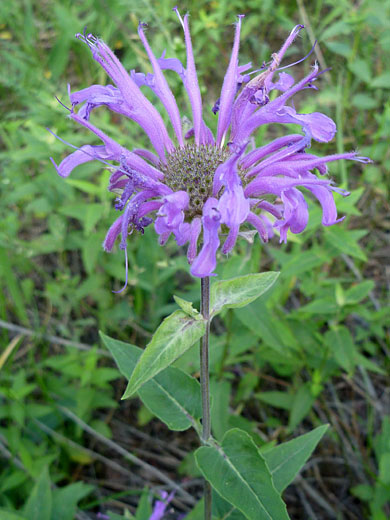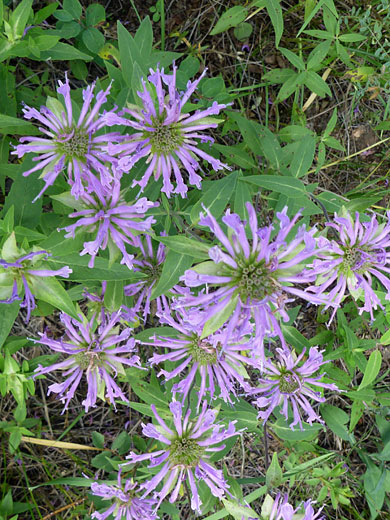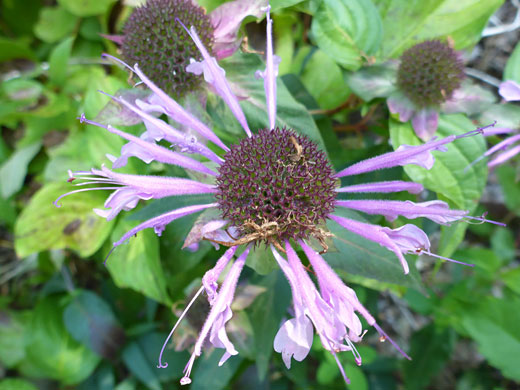Common names:
Wild bergamot, bee balm
Family:
Scientific name:
Monarda fistulosa
Synonym:
Monarda menthifolia
Main flower color:
Range:
Arizona, the Rocky Mountain states, far west Texas and the Great Plains
Height:
Up to 4 feet
Habitat:
Grassland, forest clearings; moist, open locations
Leaves:
Deltoid to lanceolate, opposite, on short stalks, up to 3 inches long. Small teeth along the edges
Season:
June to September
The inflorescence of monarda fistulosa is quite distinctive; a spherical cluster of between 20 and 50 tubular, pink/purple flowers, each around 1.15 inches in length, opening about half way along to a straight upper lip, protruding stamens and a three-lobed lower lip, curved downwards. The corolla has a covering of very fine, short hairs. Flowers are produced at the top of the stout, unbranched stems (which are square in cross-section), above a few leaf-like bracts. The plant exudes a minty odor, can form large clumps, and is abundant across many areas of the west. It has been used for a variety of purposes, including as a spice, herb, medicine, perfume and insect repellant.
All Contents © Copyright The American Southwest | Comments and Questions | Contribute | Site Map




